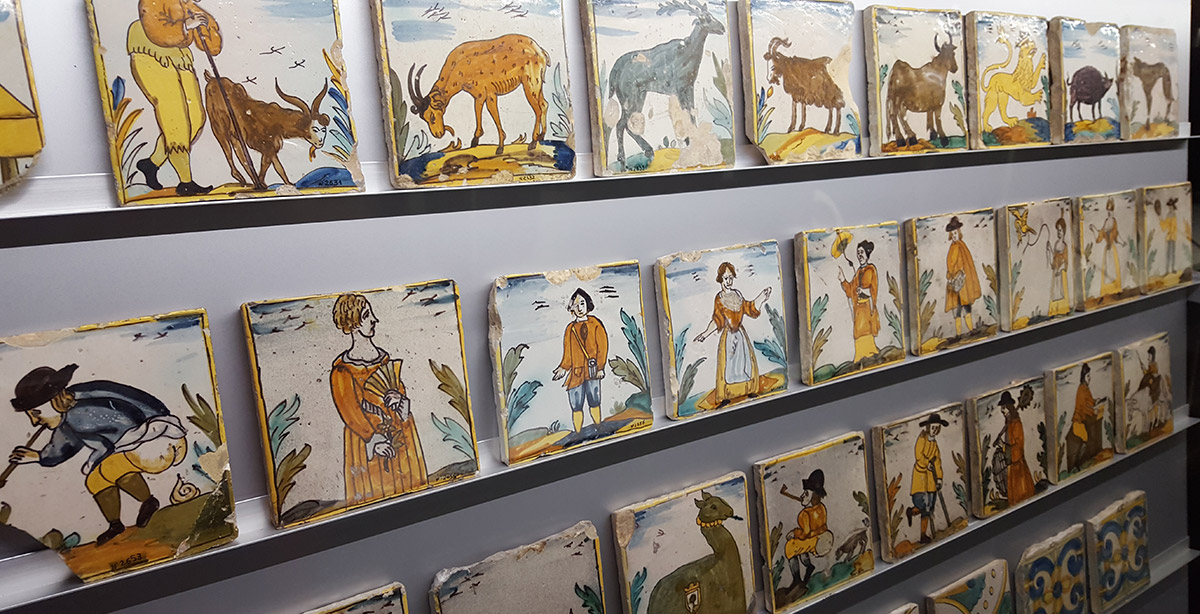Tiles are made from a clay base which is moulded, dried in the sun and subjected to a first firing in the kiln. The white background and glaze are achieved with a bath of tin, lead, sand and sea salt. After tracing the drawing on to them, the polychrome effect is achieved with a paintbrush and very light paint, traditionally obtained from earths and oxides dissolved in water. The last step is final firing, which solidifies them.
They were originally used to waterproof the damp places in houses: kitchens, areas around washbasins, toilets, wash-houses… and their function was, above all, hygienic. Ceramics later began to take on a decorative role and tiles came to form part of niches, friezes, steps, fountains, skirting boards and even façades and roofs. The glazing and varnishing of one of the faces of a tile was originally the result of Islamic influence. Then came the Italian and Flemish fashions, taken up and made their own by the Catalan craftsmen who produced tiles. They commissioned painters to provide the pictures or limited themselves to reproducing popular engravings of the time. Tiles depicting trades were the most authentic ceramic products of Catalonia, although motifs referring to other themes are also frequent. From the 17th to the 19th centuries, tiles depicting trades and crafts were a window open on the everyday life of the time. They usually show men or women doing their traditional tasks, giving them a figurative, mono-thematic form within a painted frame enriched with decorative elements (which nowadays are useful for dating them).
They offer us information not only about work and leisure but also about the social environment in which they were developed, and they show the everyday reality of occupations which have now almost disappeared. Curiously, the tile makers never portrayed their own trade. They invite visitors to identify the polychrome images with the activity they represent. Sometimes this is easy, but sometimes it’s harder…
Crafts: Working in the townmuseuderipoll.org2018-09-19T08:19:33+02:00


